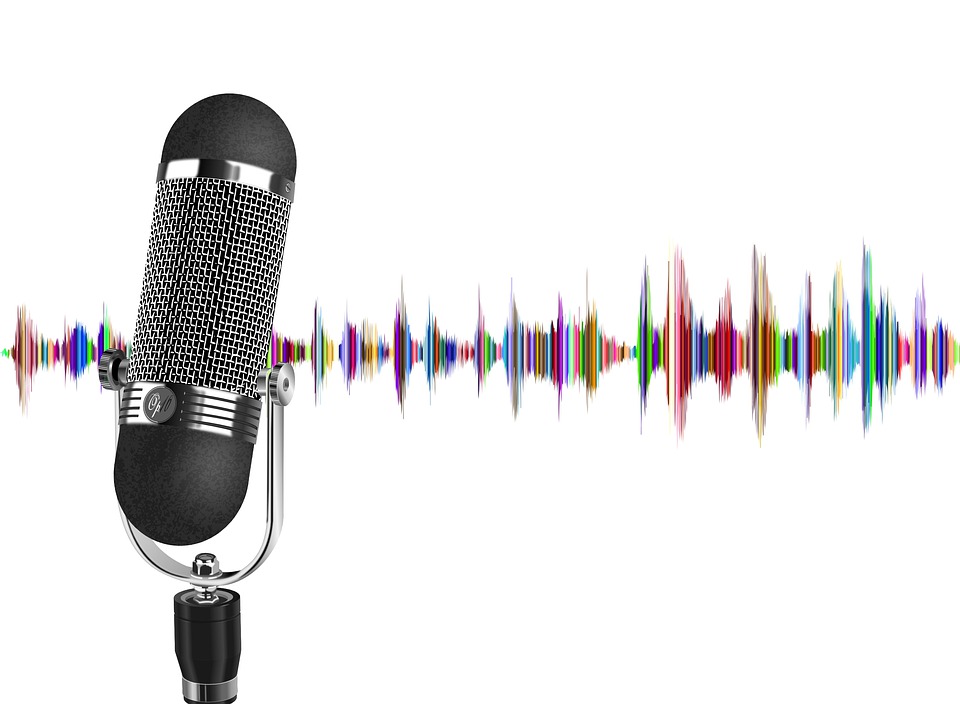There are many benefits to starting a podcast. Some people start podcasts as a hobby or a personal project.
For businesses, podcasts are a great way to build authority and trust with your consumers.
Before starting your podcast, here are some questions you must answer to know what you want to achieve exactly.
What Is the Purpose of Your Podcast?
The first question to answer is the purpose. Why do you need a podcast?
Is it to build personal connections with your customers? Is it to engage and keep existing customers to your brand? Is it to guide them on practical uses of your products or services?
Identify what it is you want to achieve with your podcast.
Who Is the Target of Your Podcast?
The following question is, who is your target audience?
Know who you’re making your show for and why it’s impossible to grow an audience.
For example, you’re in the beauty business, and you want to promote your skincare products. Then your target audience is people interested in beauty, skincare, wellness, fitness, and overall health.
Creating a listener persona can help with this question. First, create a persona for your target listener. For example, you make “Jane.” Married with one kid, early 30s, and goes to the gym regularly.
“Is Jane likely to listen to my podcasts?”
Both the persona and the questions help keep your show focused, which makes your content more engaging.
Why Should They Listen to You?
Once you have identified the goal and your audience, you should now focus on your content. Creating high-quality content for your audiences will keep them hooked on your podcast.
If they’re getting a regular stream of knowledge that will help them with their problems, they will surely tune in to your podcast.
Let’s use the skincare business again as an example. Giving tips on doing a night routine or properly washing the face will give your listeners something to look forward to.
They now have a reason to not only listen but to return for more. It’s essential to think about this in the planning stages. You can write down 10–15-episode ideas to help you create high-quality content.
Choosing a Name for Your Podcast
Choosing names is one of the hardest things to do. So here are three ways that you can name your podcast.
Remember that your podcast name is the first thing a listener will see. Therefore, creating a great name will increase your online presence and searchability.
Witty and Catchy
The first route is using a witty and catchy name.
For example, you’re a fitness coach. You could use a podcast name like “The Glorious Pain.”
Witty and catchy, right? (I hope)
The key here is to use a tagline or description to tell listeners what your podcast is all about.
The tagline could be “Your Guide to a Healthy and Happy Life.”
To complete our witty and catchy name, “The Glorious Pain: Your Guide to a Healthy and Happy Lifestyle.” Catchy title, descriptive tagline.
Descriptive and Informative
Another great way to name it is to go a straightforward route.
Let’s retake the fitness coach example. Let’s say you use the name “The Fitness and Lifestyle Podcast.” It is descriptive and informative, but most people see this as boring.
Your podcast name clearly shows what the podcast is about, but it reduces listeners’ chance of remembering it. If your podcasts also have videos, consider putting in transcriptions or subtitle using transcribing software free for everyone.
Also, avoid naming your podcast too long. You’ll be saying it many times, and it would help if it weren’t too wordy to say.
Using Your Brand Name
You should steer clear from this naming route if you’re just starting as a new business and a new podcast.
Naming your fitness podcast with something like “The Johnny Buff Show” would raise some questions (and some eyebrows). First, people might ask, “Who is Johnny Buff?” Some people might even confuse you with Johnny Buff, the boxer.
Some brands can go away with this because they have an already established name and a considerable following. For example, if Gold’s Gym started a podcast, they would probably name it “Gold’s Gym Show” or “Gold’s Gym Podcast.”
But, if you want to incorporate your brand into your podcast name, combine it with descriptive and informative.
“Your Journey to Fitness with Johnny Buff” sounds better, isn’t it?
How to Plan Your Episodes
The next step would be planning your episodes. Starting a podcast without planning could mean disaster. It’s also easier for you to develop ideas if you arrange or prepare for a whole season.
Ideal Podcast Length
If you’re wondering about the ideal podcast length, it should be long enough to cover your topic and short enough not to bore your audience to leave. Remember that your business promotions go at the end of the podcast, and you should avoid boring your audience to leave too early.
Here’s an ideal podcast length that you could follow.
- Daily – 15 to 30 minutes
- Weekly – 30 to 60 minutes
- Biweekly or monthly – 60 to 90 minutes
Ideal Release Schedule
You should also have a set time for releasing your episode. Having a specific release time could build excitement and anticipation for your listeners.
For example, you could set your episode release every Friday at 9:00 PM. Your followers have something to look forward to on that day. It could also build a routine for your listeners.
How to Choose Good Episode Titles
You want your episodes to have good, searchable, descriptive titles just like the name of your podcast.
One of the biggest mistakes you make when naming your episodes is calling them “Episode 1”, or “Ep 2”, etc. Listeners will have no idea what to expect. Creating a compelling podcast relies on people listening to it, so make your episodes clear.
Describe clearly what your show will bring to listeners. You’ll see titles like “X Tips For…” or “How To…” in any podcast directory. People love them because they work. So simply make sure you deliver in the episode what you said in the title.
Another benefit is that it allows listeners to search episodes by name. Your podcast will appear for keywords in the title and keywords in the podcast name. If you name them well, you gain an extra layer of reach.
How to Select a Podcast Format
There isn’t any rule of thumb when it comes to podcast formats. Instead, it boils down to what you’re comfortable with.
If you’re not familiar with podcasts formats, here’s a simple guide you can follow.
Solo
This is a style that is like a monologue. You will be the only one engaging the listeners with your topic. The good thing here is, you will have total control over the podcast. You don’t have to wait for anyone to start.
Another benefit here is you are building your presence as an expert on the topic. In addition, you can build your credibility as a go-to podcast for your chosen niche.
The downside, however, is that you’re doing it solo. So, you may have a hard time if you’re uncomfortable talking alone.
Partner
Having a partner to engage with is another excellent style of podcasting. If you have someone who you could talk to, debate, and even criticize, then this is a great format to try.
The chemistry between the hosts makes all the difference.
Interview
Getting known experts and picking their brains is another excellent way to host a podcast. This podcast style can be called interviews.
Getting to interview someone you look up to gives you the chance to chat with them. In addition, your guests may have their audiences who will listen to the interview, and they may end up subscribing to your show. This can increase your audience significantly.
To sum things up, there is no hard rule when it comes to style. Choose whatever you’re comfortable with. You can even mix things up and surprise your listeners.
How to Record and Edit Your Podcast
Once you finish planning your podcast and style, it’s to do the recording.
Equipment for Recording
You’ll need a computer with a USB microphone and an internet connection to record a podcast. On average, however, the lower the cost and smaller the setup of your show, the lower the sound quality will be.
A good microphone is always an excellent investment.
Another tool you need when making a podcast is recording and editing software. Fortunately, you can find free software online.
Podcast Editing
Most podcast recording software comes with an editing function.
Editing a podcast can be intimidating at first because of all the unfamiliar buttons you’ll see in the dashboard.
There are four basic steps to editing a podcast.
- Planning
- Recording
- Editing
- Publishing
Editors condense content, create a smooth narrative, improve audio quality, and sometimes create supplementary materials for your podcast.
Podcast Transcribing
If you’re not aware of this trend, transcribing your podcast can do wonders for your business.
You can easily share your podcast on all social media platforms by generating transcripts of your content. The more text-based your content is, the easier it is to share, and the more viral it will be. It’s also an excellent way to boost SEO.
Cover Art
Your podcast cover art is as crucial as your titles. Creating an eye-catching cover will attract new listeners looking for a new podcast to listen to.
Description
A description is also a valuable tool for attracting new listeners. After attracting people to your catchy cover and name, a brief description will help new listeners know all about your podcast.
Uploading Your Podcast
It’s now time to share to the world your new podcast. You can upload it to popular podcast platforms like Spotify, Apple, and Google. You could also upload it to your website if you have one.
Buy Me A Coffee
The Havok Journal seeks to serve as a voice of the Veteran and First Responder communities through a focus on current affairs and articles of interest to the public in general, and the veteran community in particular. We strive to offer timely, current, and informative content, with the occasional piece focused on entertainment. We are continually expanding and striving to improve the readers’ experience.
© 2024 The Havok Journal
The Havok Journal welcomes re-posting of our original content as long as it is done in compliance with our Terms of Use.



